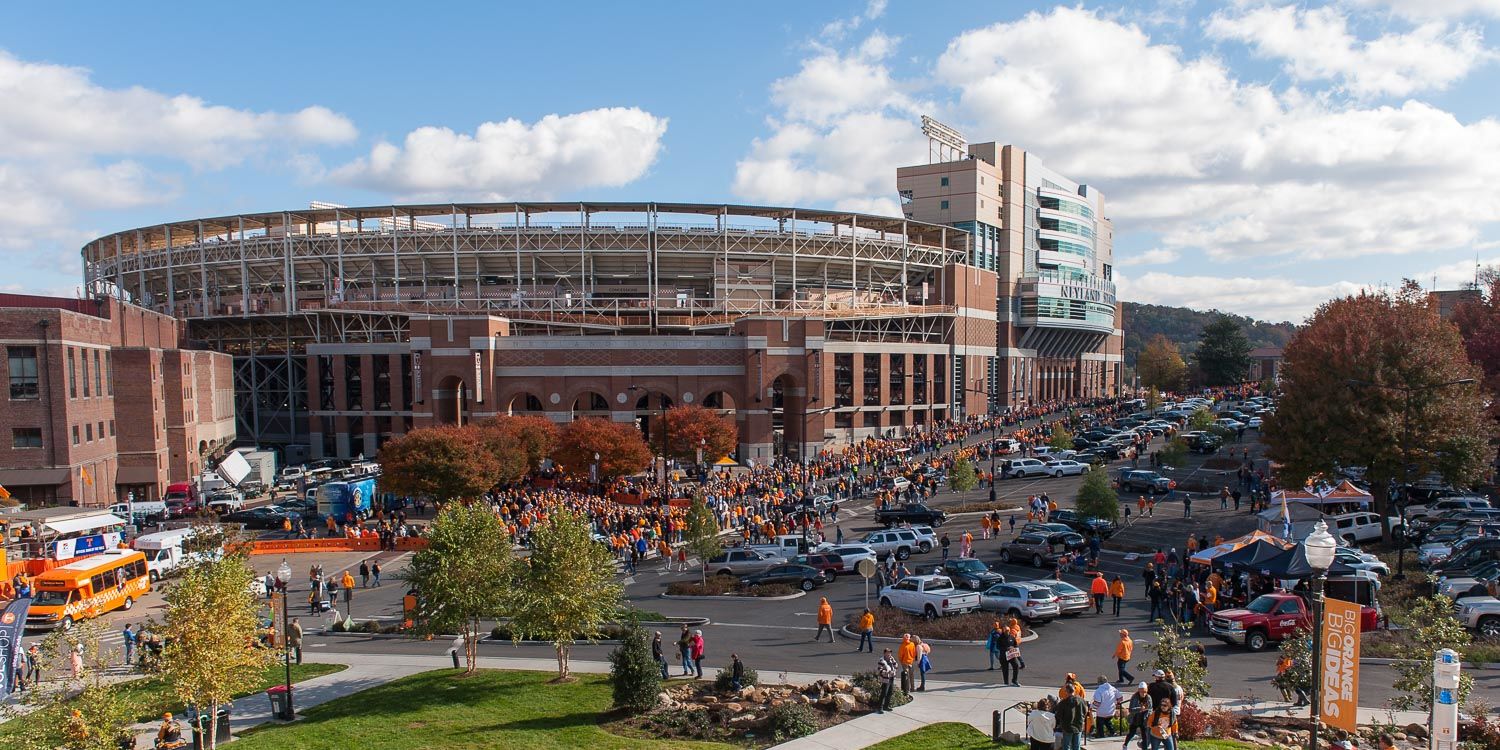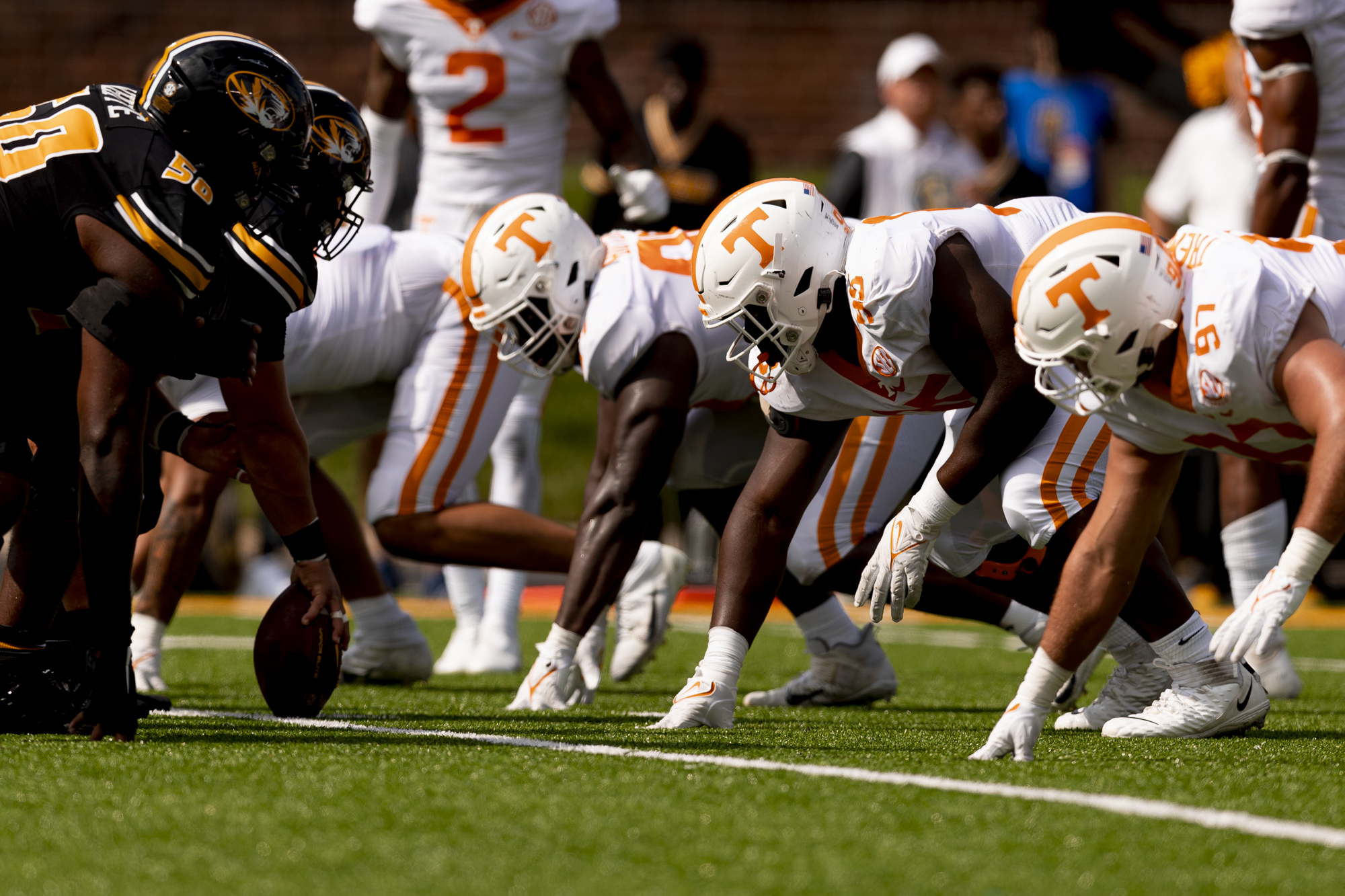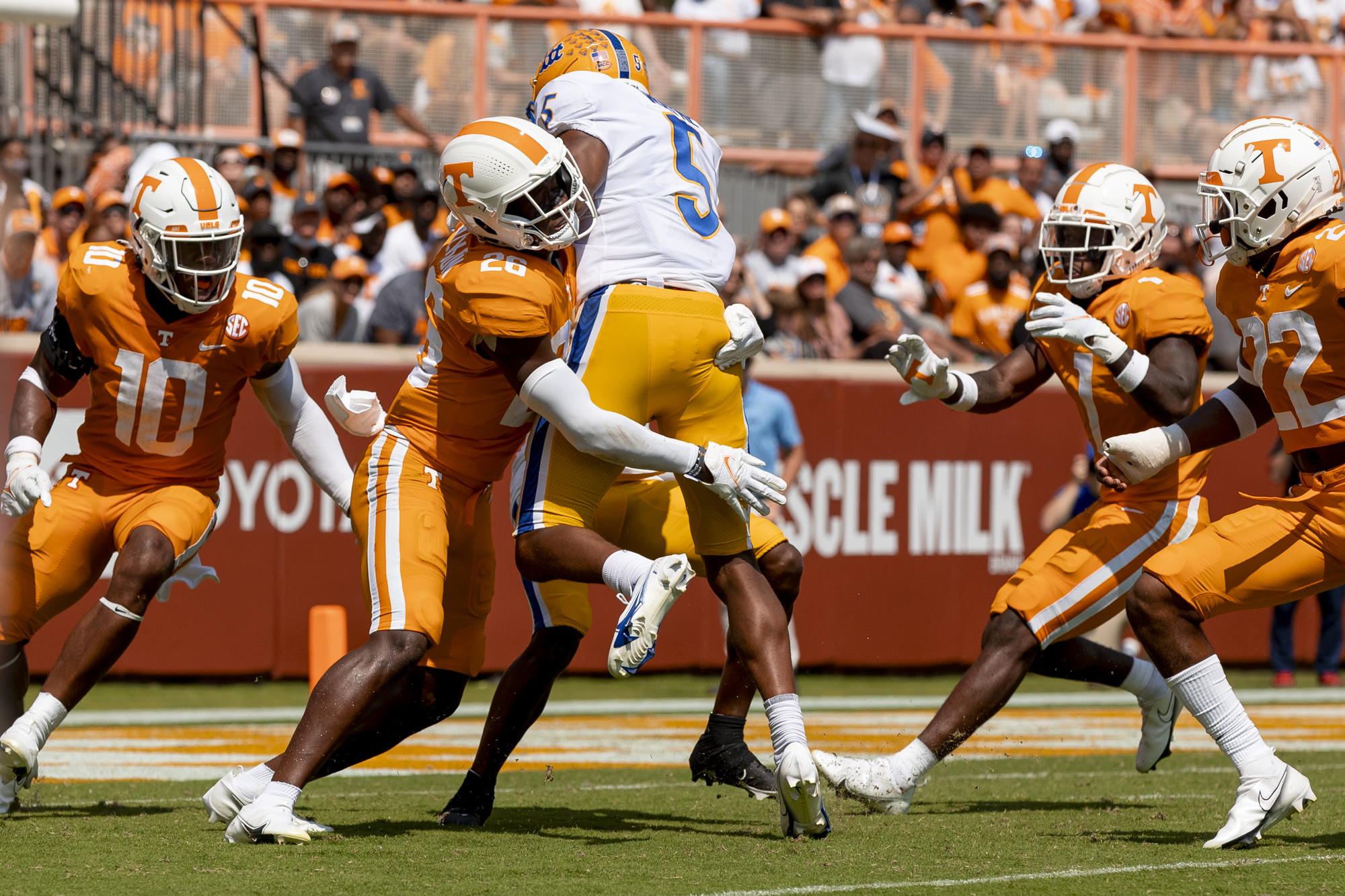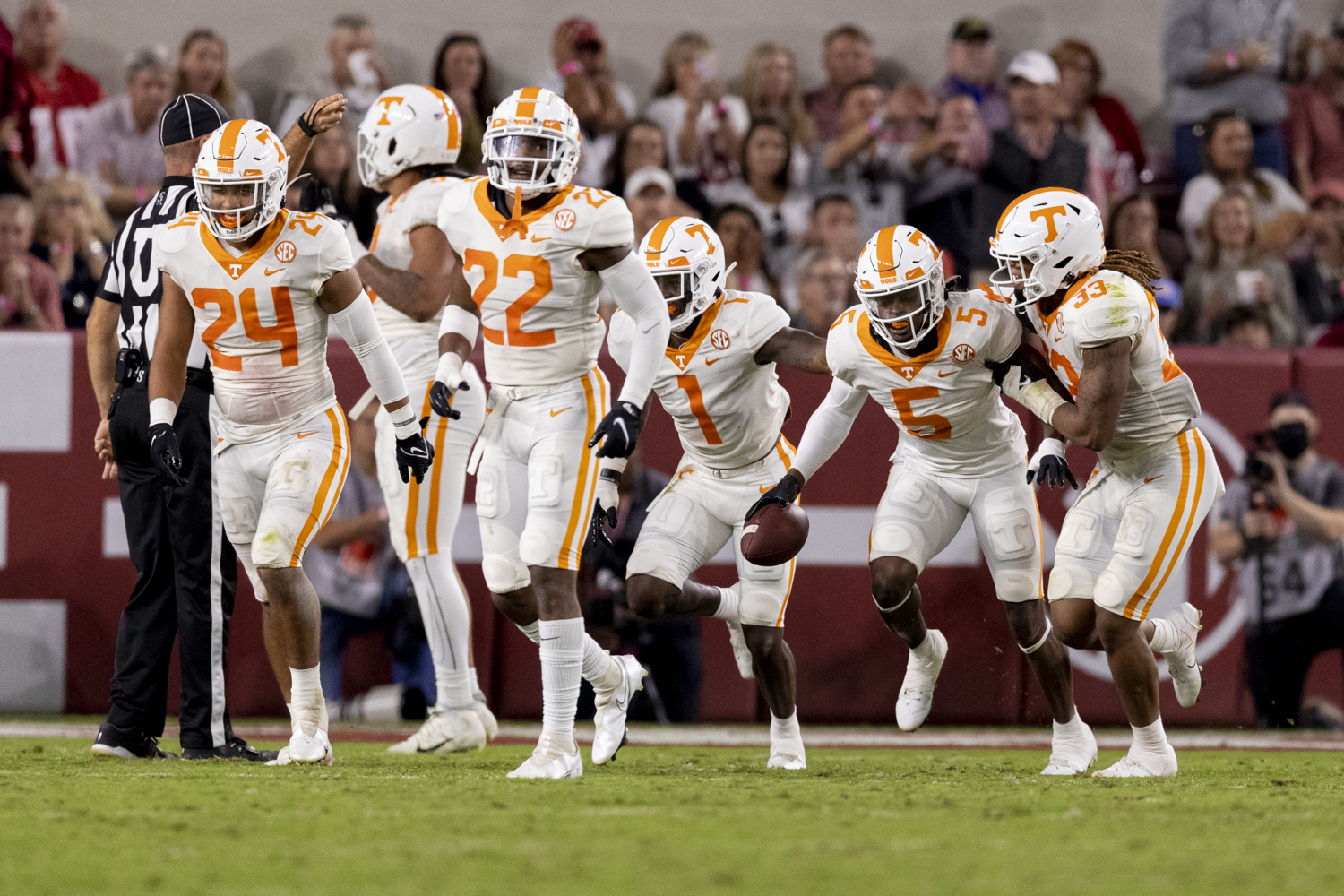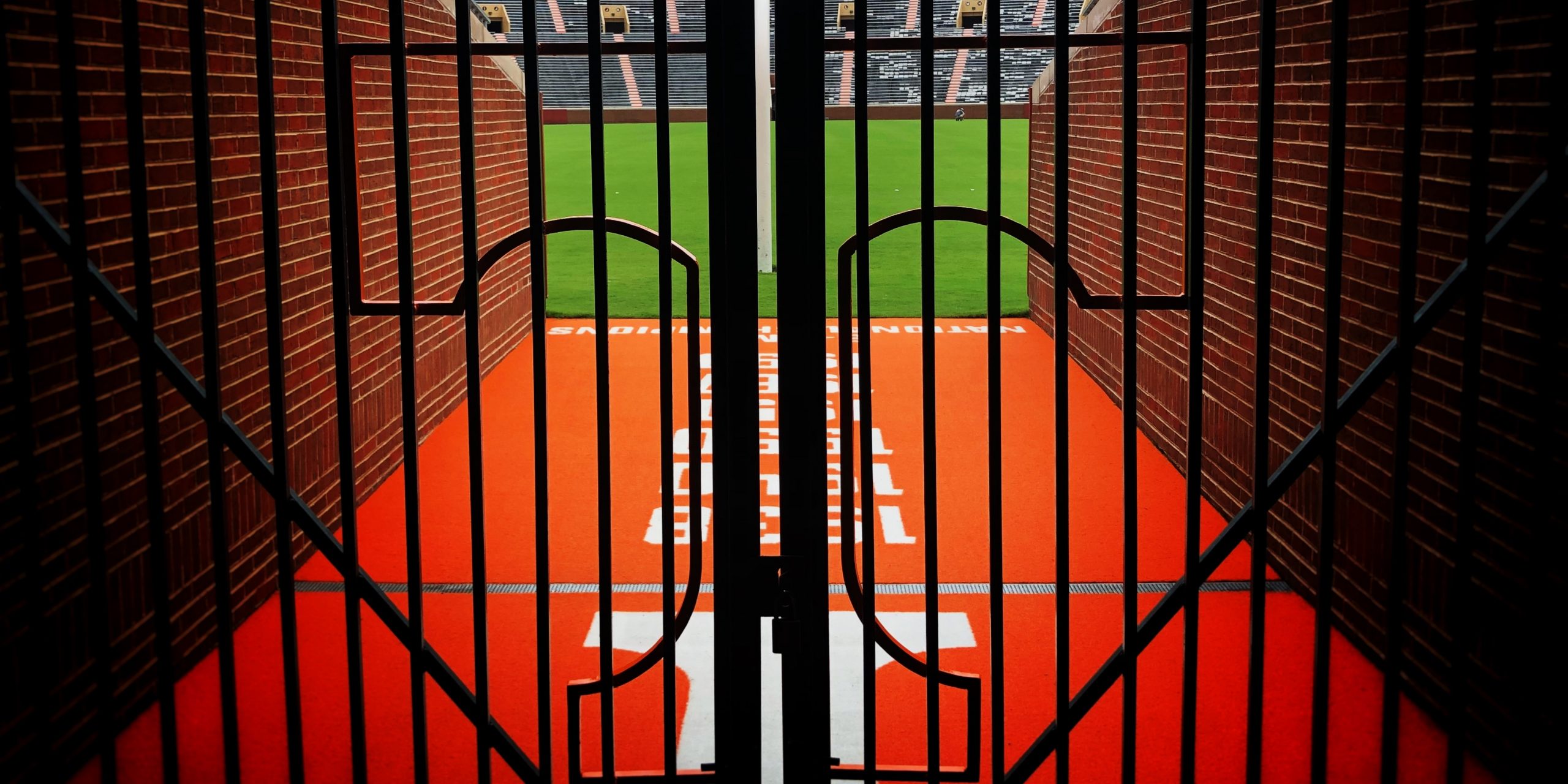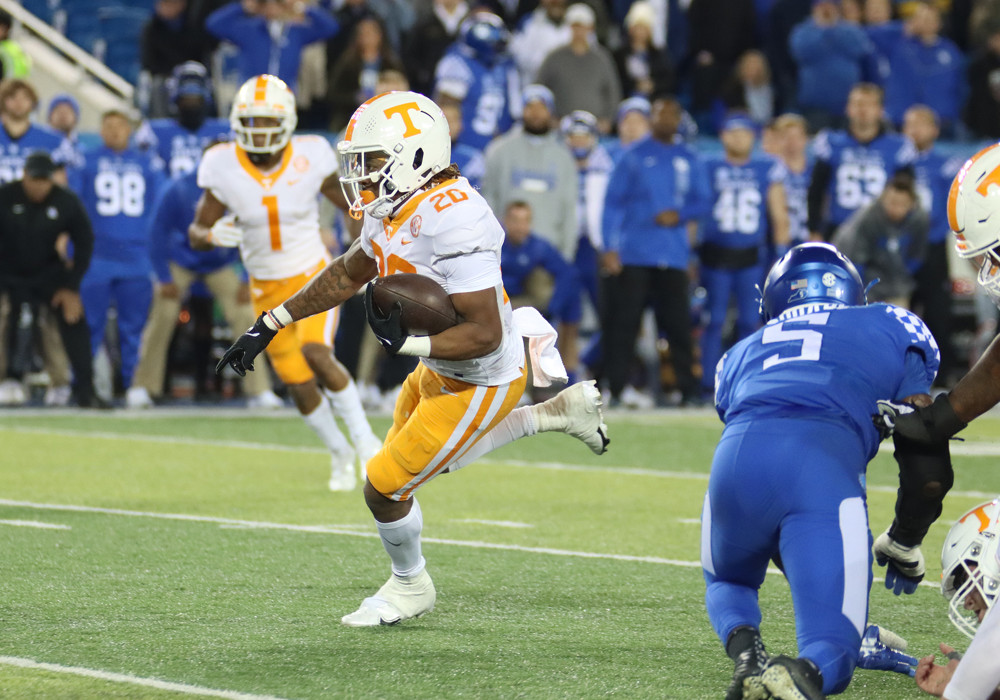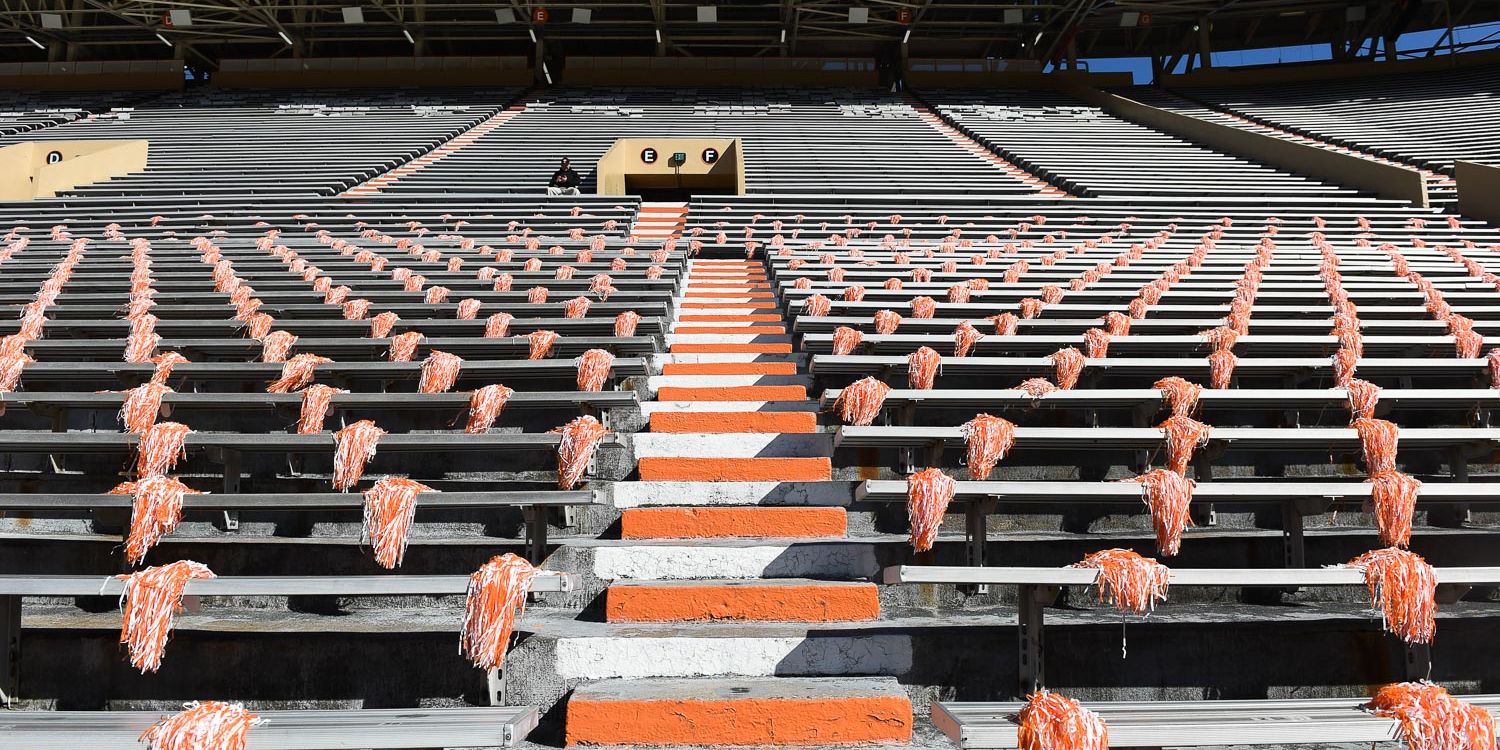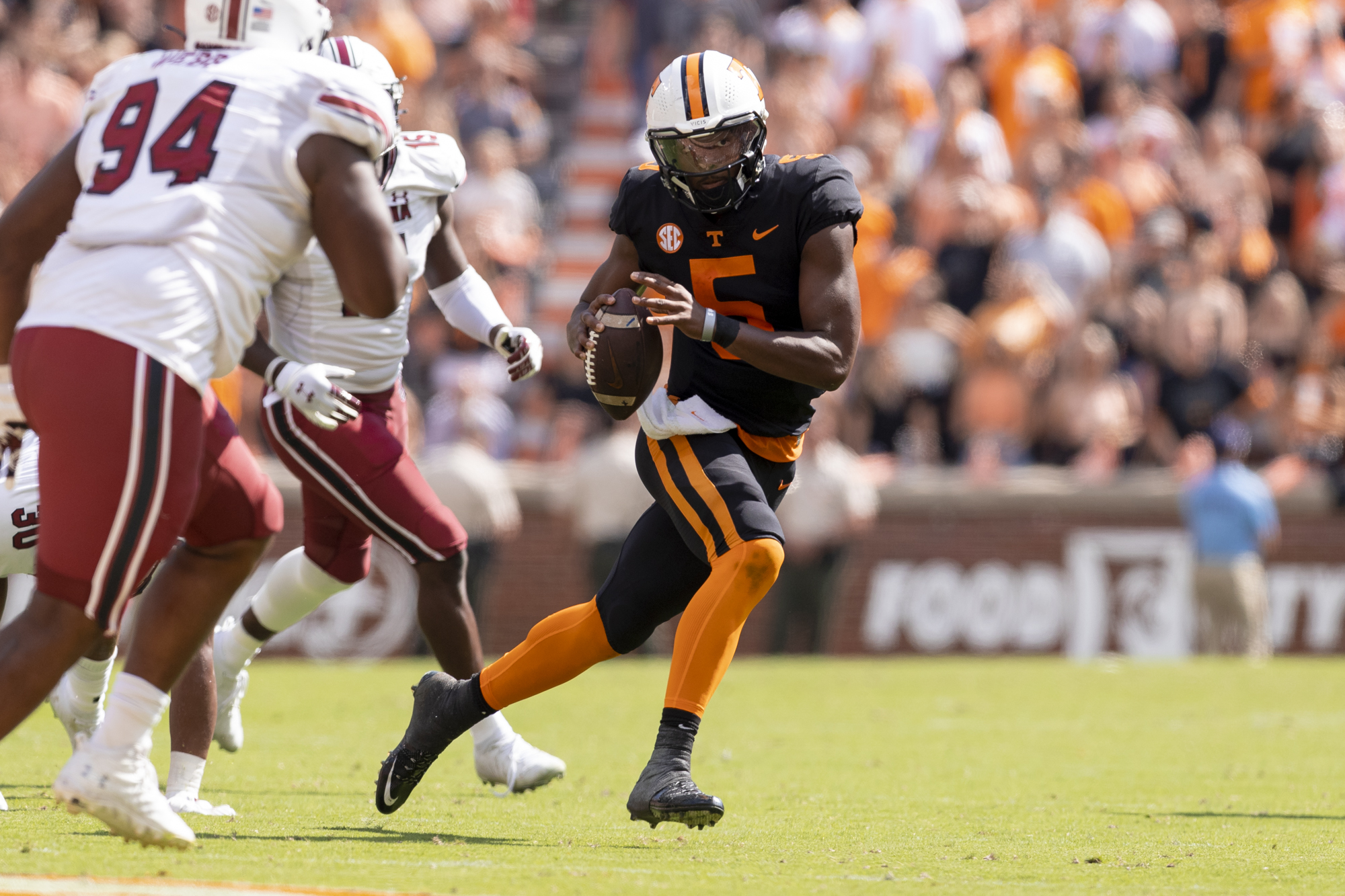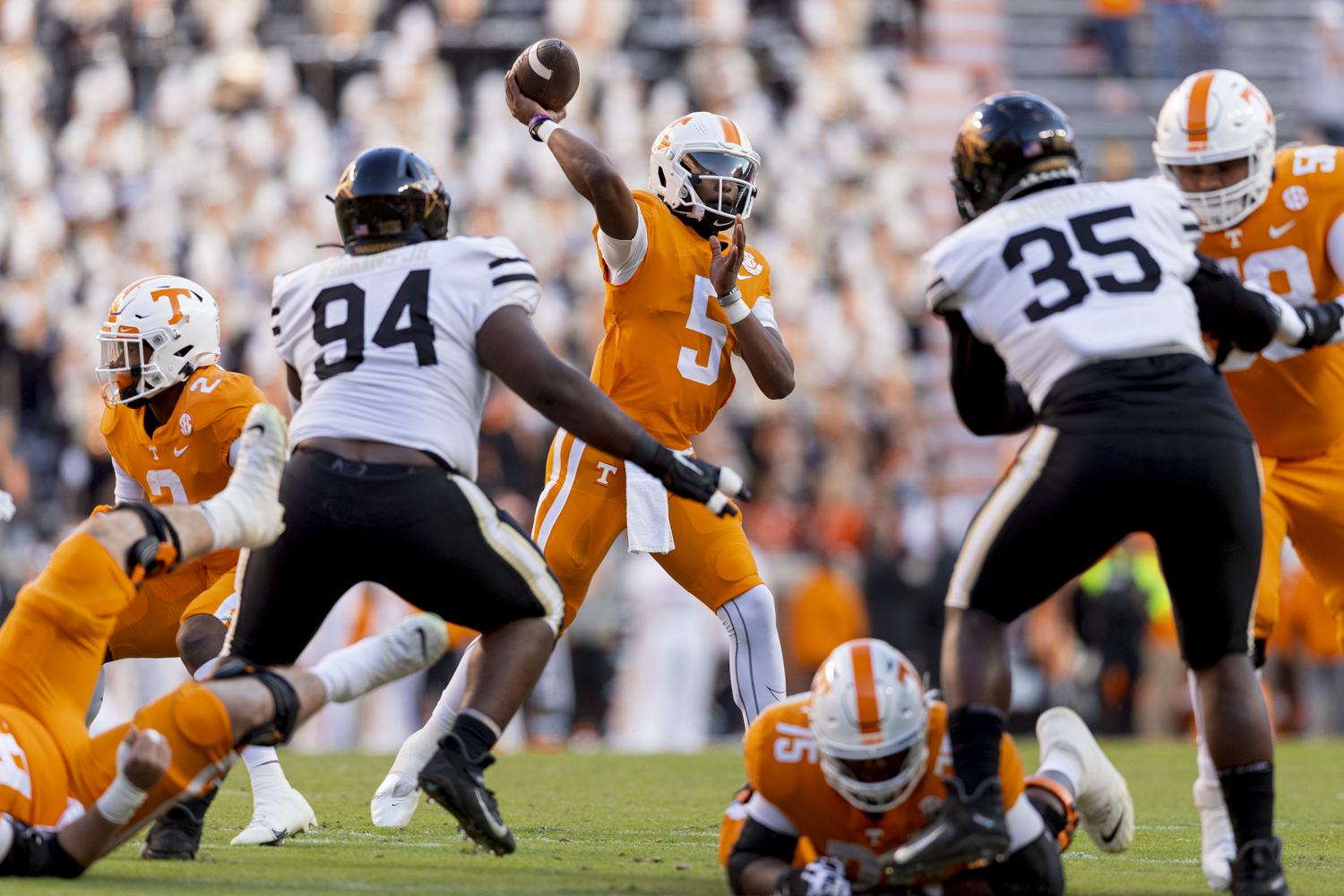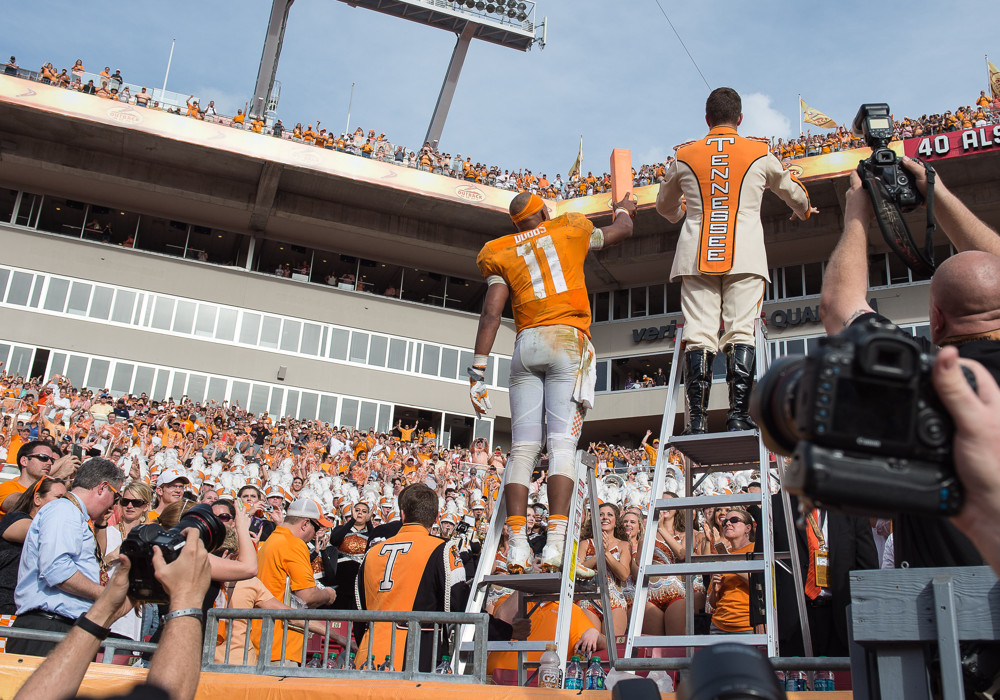The USA Today Coaches’ Poll was released Monday and, to the surprise of some Tennessee fans, the Vols weren’t ranked among the top 25 teams in the country. Instead, fans had to count down three spots to #28, putting the Vols just outside the Top 25, right behind Iowa and Penn State. Also coming in ahead of Tennessee in the poll was border rival Kentucky (#21), as well as Week 2 opponent, Pittsburgh (#16).
So how have the Vols fared in the polls over the years? I took a look back at every poll since 1997 to see where Tennessee was ranked preseason, how they moved week-to-week, and most importantly, where they ended up at season’s end. It was an emotional exercise, complete with great memories: watching James Wilhoit kick a 50-yard field goal to beat Florida my freshman year at UT, or Jauan Jennings beating Jalen Tabor and streaking into the south end zone in 2016. It also had its share of pain: the 2016 loss to Vanderbilt that cost Tennessee a spot in the Sugar Bowl. Or watching a trip to the national championship snatched away by an 8-3 LSU team led by a backup quarterback in the 2001 SEC Championship Game.
Read More: How important is figuring out the #2 RB?
If you don’t have the time to read through each season’s ranking summary, here are a few key facts from my time poring over the polls:
- Tennessee has only finished the season ranked higher than they started six times since 1997:
- 1998: Started #10, ended #1
- 2001: started #8, ended #4
- 2004: started #14, ended #13
- 2007: started #15, ended #12
- 2015: started #25, ended #23
- 2019: started #55 (Coaches’ Poll), ended #35
- The Vols have started the season ranked in the Top 25 and ended it unranked four times since 1997:
- 2000: #12
- 2002: #5
- 2008: #18
- 2017: #25
- 2020 was the only year since 1997 that the Vols started the season outside the Top 25 (#26) and made it into the rankings, peaking at #12 before the 10-game SEC COVID schedule took its toll.
- The Vols #12 ranking in the final poll of 2007 would be the last time the team would be ranked at season’s end until 2015.
- When the Vols finished the 2007 season ranked #12, it would be 8 full seasons before they would achieve a higher ranking.
Here’s a detailed breakdown by year. Note that all rankings are from the AP Poll, unless otherwise noted.
Year-by-Year Poll Results
1997
Preseason: #5
Final: #7
Highest Rank: #3 (3 weeks)
Lowest Rank: #9 (4 weeks)
Weeks Unranked: 0
Tennessee kicked off the season ranked #5 in the country, and managed to hold a top-10 ranking all season long. The Vols held the #3 ranking three different weeks in Peyton Manning’s final season in orange, and took that ranking into an Orange Bowl matchup with #2 Nebraska. A loss to the Cornhuskers dropped Tennessee to #7 in the final AP poll.
1998
Preseason: #10
Final: #1
Highest Rank: #1 (6 weeks)
Lowest Rank: #10 (preseason)
Weeks Unranked: 0
The Vols only fell in the polls once in 1998, when they dropped from #3 to #4 after a 17-9 victory over Auburn on the Plains in Week 5. There was nowhere to go but up after that; the Vols secured the #1 ranking after taking down UAB in Knoxville on November 7 and rode it all the way to the National Championship.
1999
Preseason: #2
Final: #9
Highest Rank: #2 (2 weeks)
Lowest Rank: #9 (final)
Weeks Unranked: 0
A team led by National Championship-winning quarterback Tee Martin finished the year 9-3, but an early season loss to #4 Florida in Gainesville, and a 4-point loss to unranked Arkansas in mid-November stifled Tennessee’s hopes to repeat as national champions. The #6 Vols fell to #3 Nebraska in the Fiesta Bowl, ending the season ranked #9 in the country.
2000
Preseason: #12
Final: Not Ranked
Highest Rank: #11 (2 weeks)
Lowest Rank: Unranked
Weeks Unranked: 6
In Phillip Fulmer’s eighth season with the Vols, the team finished 8-4 (5-3 SEC), going undefeated in regular season play after freshman quarterback Casey Clausen took the reins against Alabama. However, three early losses to #6 Florida, LSU and #19 Georgia knocked the Vols from the rankings until the final week against Vanderbilt when the #25 Vols squeaked by the Commodores 28-26. The #21 Vols fell to #11 Kansas State in the Cotton Bowl to end the year unranked in the final AP Poll.
2001
Preseason: #8
Final: #4
Highest Rank: #2 (1 week)
Lowest Rank: #13 (1 week)
Weeks Unranked: 0
“I still have PTSD about 2002. Shoulda been our year to win it all and legitimize ‘98 even more.”
“I took a rose to school the Friday before [the SEC Championship]. So hard to face the Bama fans the following Monday.
”Matty [freakin’] Mauck.”
These were the responses from a group text of Vols fans I’m in as we discussed what could have been from the 2001 season. Despite an early October loss to unranked Georgia that dropped Tennessee to #11, the #2 Vols were a win in Atlanta away from facing #1 Miami in the Rose Bowl, but lost to #20 LSU in the Tigers first trip to the SEC Championship. In fact, since it was first played in 1992, LSU’s ‘01 win was the only time the SEC Championship has prevented an SEC team from playing for a national championship.
2002
Preseason: #5
Final: Not Ranked
Highest Rank: 4 (4 weeks)
Lowest Rank: Unranked
Weeks Unranked: 7
Tennessee never beat a ranked team in ‘02, finishing the season 8-4 (5-3 SEC). Losses to #10 Florida, #6 Georgia and #19 Alabama pushed the Vols to #25 headed to a November 9 matchup with #2 Miami. A 26-3 Hurricanes drubbing in front of 108,000+ at Neyland Stadium knocked the Vols out of the Top 25 for good, although the team did finish #27 in the final Coaches’ Poll.
2003
Preseason: #12
Final: #15
Highest Rank: #7 (3 weeks)
Lowest Rank: #22 (1 week)
Weeks Unranked: 0
Behind Clausen, now in his senior year, the Vols finished 9-3 (6-2 SEC) with a win over #17 Florida, and revenge against #6 Miami for the previous year’s shellacking in Knoxville. Unfortunately, the Vols fell from #7 to #22 after back-to-back losses to unranked Auburn and #8 Georgia. UT got hot and snapped off six wins in a row to work their way to #6 before losing to Clemson in Atlanta.
2004
Preseason: #14
Final: #15
Highest Rank: #6 (1 week)
Lowest Rank: #17 (2 weeks)
Weeks Unranked: 0
After a two big wins over UNLV and Louisiana Tech, and a James Wilhoit field goal to beat Florida, the Vols worked their way to #10 in the country, setting up a top-10 matchup between the Vols and #8 Auburn. With College Gameday on campus, the Tigers’ Cadillac Williams and Ronnie Brown ran up and down Shields-Watkins Field, handing the Vols a 34-10 beating. Tennessee slipped to #17 the week after, but a win at #3 Georgia turned things around. #15 Tennessee fell in a rematch with #3 Auburn in Atlanta, before knocking off #22 Texas A&M in the Cotton Bowl, to end the year at #15.
2005
Preseason: #3
Final: Not Ranked
Highest Rank: #3 (preseason)
Lowest Rank: Not Ranked
Weeks Unranked: 7
With quarterback Erik Ainge entering his second season on Rocky Top, hopes were high in Knoxville, with a preseason #3 ranking to match. A close win over UAB, followed by a loss to #5 Florida (the first in a long string to the Gators) knocked the Vols down to #10. After wins at LSU and against Ole Miss, the Vols then dropped three in a row to #5 Georgia, #5 Alabama and South Carolina to drop all the way out of the rankings. Losses to Notre Dame and Vanderbilt sealed the team’s fate and the Vols missed a bowl game for the first time since 1998.
2006
Preseason: #23
Final: #25
Highest Rank: #7 (1 week)
Lowest Rank: #25 (final)
Weeks Unranked: 0
Despite their disastrous 2005 campaign, the Vols managed to snag a Top-25 ranking in the preseason AP Poll. A dominant win over #9 Cal in Knoxville catapulted the Vols to #11 in the country, but a narrow win over Air Force, followed by a 1-point loss to Florida dropped Tennessee to #15. A streak of 5 wins, including victories over #10 Georgia and the team’s last win over Alabama, pushed Tennessee back up to #8, but losses to #13 LSU and #11 Arkansas dropped Tennessee to #22. UT climbed up to #17 after beating Vandy and Kentucky, but a loss to #17 Penn State pushed the Vols down to #25 in the final poll.
2007
Preseason: #15
Final: #12
Highest Rank: #12 (final)
Lowest Rank: Not Ranked
Weeks Unranked: 4
The Vols traveled west to take on Cal in the opening game of the 2007 campaign, and the Golden Bears got payback against Tennessee for their 2006 loss with a 45-31 win in Berkeley. The loss dropped Tennessee to #24, and #3 Florida would knock the Vols out of the rankings with a 59-20 dismantling in Gainesville. After a win over #12 Georgia, the Vols scratched back to #25, but a loss to first-year Bama head coach Nick Saban in Tuscaloosa pushed UT out of the rankings. Five straight wins got the Vols to #14 and the SEC Championship against LSU. After losing to the eventual national champion Tigers, the #16 Vols downed #18 Wisconsin to secure their #12 ranking. Little did fans know that the #12 slot would be their highest ranking until 2016.
2008
Preseason: #18
Final: Not Ranked
Highest Rank: #18 (preseason)
Lowest Rank: Not Ranked
Weeks Unranked: 16
The beginning of the dark years. The Vols entered the 2008 season ranked #18. An overtime loss to unranked UCLA at the Rose Bowl knocked Tennessee from the Top 25. They wouldn’t be back for six whole seasons.
2009
Preseason: #52 (Coaches’ Poll)
Final: Not Ranked
Highest Rank: #35 (Coaches’ Poll)
Lowest Rank: Not Ranked
Weeks Unranked: 16
A win over #21 South Carolina on Halloween in black Adidas jerseys was the highpoint of the season, which ended with a 37-14 loss to #12 Virginia Tech in the Chick-fil-A Bowl.
2010
Preseason: Not Ranked
Final: Not Ranked
Highest Rank: Not Ranked
Lowest Rank: Not Ranked
Weeks Unranked: 16
Following Lane Kiffin’s brief stint on Rocky Top, the Derek Dooley Show came to town. Tennessee would finish the year 6-6 (3-5 SEC), failing to beat any ranked teams and falling to North Carolina in the Music City Bowl.
2011
Preseason: #40 (Coaches’ Poll)
Final: Not Ranked
Highest Rank: #32 (Coaches’ Poll)
Lowest Rank: Not Ranked
Weeks Unranked: 16
In Dooley’s second season, Tennessee flirted with the “Also Receiving Votes” column of the Coaches’ Poll for a few weeks. Outside of a win over #12 (FCS) Montana, though, Tennessee faithful had little to cheer about, as the team finished 5-7 (1-7 SEC).
2012
Preseason: #41 (Coaches’ Poll)
Final: Not Ranked
Highest Rank: #23
Lowest Rank: Not Ranked
Weeks Unranked: 15
The Derek Dooley Experiment, complete with hygiene lessons and World War II analogies, mercifully ended before the last week of the season, but not before the Vols racked up another 1-7 SEC season, beating only Kentucky under interim head coach Jim Chaney. Big wins over NC State and Georgia State had the Vols at #23, before the team suffered its annual loss to Florida in Week 3.
2013
Preseason: #50 (Coaches’ Poll)
Final: Not Ranked
Highest Rank: #43 (Coaches’ Poll)
Lowest Rank: Not Ranked
Weeks Unranked: 16
Butch Jones got a signature “Year 1” win over #11 South Carolina in Knoxville, but only managed one other SEC win, a 27-14 victory in Lexington. Early wins over Austin Peay and Western Kentucky pushed Tennessee up to #43 in the Coaches’ Poll, but they didn’t make any poll noise after that.
2014
Preseason: Not Ranked
Final: Not Ranked
Highest Rank: Not Ranked
Lowest Rank: Not Ranked
Weeks Unranked: 16
Tennessee managed to eek out three SEC wins against South Carolina, Vanderbilt and Kentucky, and played #12 Georgia close in Athens, but the Vols didn’t manage to earn a vote in either poll. The team did finish the year over .500 with a win over Iowa in the TaxSlayer Bowl.
2015
Preseason: #25
Final: #22
Highest Rank: #22 (final)
Lowest Rank: Not Ranked
Weeks Unranked: 5
Back in the preseason Top 25 for the first time since 2008, the Vols’ time there would be short-lived after a crushing double-overtime loss to Baker Mayfield and #19 Oklahoma. Losses to unranked Florida and Arkansas pushed UT out of the “Also Receiving Votes” column. A five-game winning streak leading into a huge 45-6 win over #12 Northwestern in the Outback Bowl led announcer Mark Jones to predict 2016 would be the year of the Volunteers. Tennessee would finish the year ranked #22, their first spot in the final poll since 2007.
2016
Preseason: #9
Final: #24
Highest Rank: #9 (2 weeks)
Lowest Rank: #30 (Coaches’ Poll)
Weeks Unranked: 5
Mark Jones was half-correct. The first half of the 2016 season would be the year of the Volunteer. Tennessee started the year off white-hot, tallying five straight victories, including a win over #19 Florida and #25 Georgia (thanks Jauan). Despite a double-overtime loss to Texas A&M, the Vols held onto their #9 ranking going into a contest with #1 Alabama in Knoxville. A 39-point loss to the Crimson TIde, followed by a loss to unranked South Carolina in Columbia knocked Tennessee from the ranks. They would claw their way back to #24 before a loss to Vanderbilt cost them their ranking and a shot at the Sugar Bowl. The team managed to salvage a second consecutive final rank – this time #24 – with a 38-24 win over Nebraska in the Music City Bowl.
2017
Preseason: #25
Final: Not Ranked
Highest Rank: #23 (1 week)
Lowest Rank: Not Ranked
Weeks Unranked: 13
What a disaster. Ranked #25 coming into the season, Tennessee would finish 4-8 (0-8 SEC). Early wins over Georgia Tech and Indiana State moved Tennessee up to #23 in the AP Poll before a 26-20 loss to Florida on a last second touchdown pass by Feleipe Franks knocked the Vols from the rankings. A 41-0 loss to Georgia two weeks later closed the door on Tennessee’s hopes to regain their ranking. Butch Jones would be shown the door before a November 18 showdown with LSU.
2018
Preseason: Not Ranked
Final: Not Ranked
Highest Rank: Not Ranked
Lowest Rank: Not Ranked
Weeks Unranked: 15
Despite wins over #21 Auburn in October and #12 Kentucky in November, Tennessee failed to sniff the rankings in 2018, ending the season with a 5-7 (2-6 SEC) record, including a 38-13 loss to Vanderbilt to close the season with a whimper.
2019
Preseason: #55 (Coaches’ Poll)
Final: #35 (Coaches’ Poll)
Highest Rank: #35 (final; Coaches’ Poll)
Lowest Rank: Not Ranked
Weeks Unranked: 15
An opening week disaster against Georgia State prevented the Vols from a shot at a nine-win season. UT failed to beat a ranked team in 2019, falling to #9 Florida, #3 Georgia and #1 Alabama by a combined score of 112-30. A bowl win against Indiana garnered the Vols a few votes in the final Coaches’ Poll of the year,
2020
Preseason: #25
Final: Not Ranked
Highest Rank: #12
Lowest Rank: Not Ranked
Weeks Unranked: 10
Facing the first year of the COVID-19 pandemic and a 10-game SEC slate, the Vols were ranked #16 before their first game due to scheduling differences. Tennessee climbed to #14 after wins over South Carolina and Missouri, but six straight losses quickly ended that. Tennessee managed to scratch out a win over Vanderbilt in December, before losing the final contest of the year to Texas A&M.
2021
Preseason: Not Ranked
Final: Not Ranked
Highest Rank: #36 (Coaches’ Poll)
Lowest Rank: Not Ranked
Weeks Unranked: 15
Despite flashes of brilliance under first year head coach Josh Heupel, the Vols never strung together enough victories together to make much poll noise in 2021. The highlight of the year came in an upset of #18 Kentucky in Lexington. And near misses against Pittsburgh, #13 Ole Miss and Purdue gave UT fans hope for the future.
